Beaver kits, Muskrats, Black Crowned Night Herons, River Otters, Green Herons, Western Pond Turtle, various fish, the list is constantly changing.
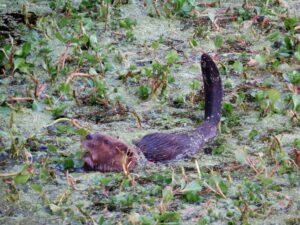

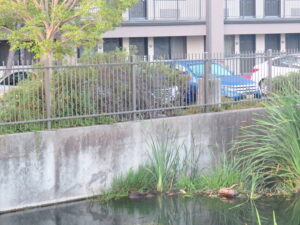
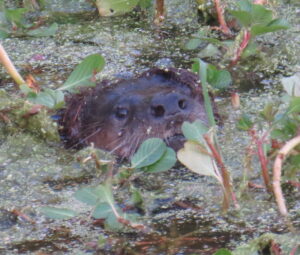
![]()
![]()
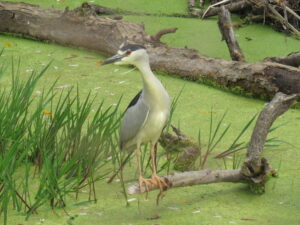
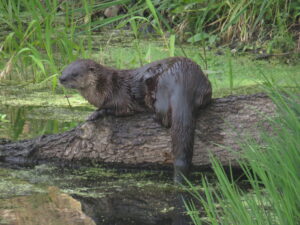
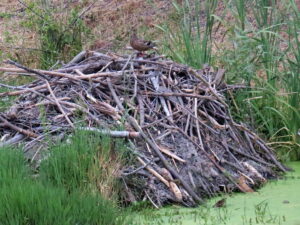

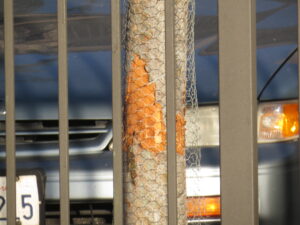

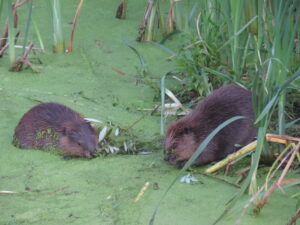
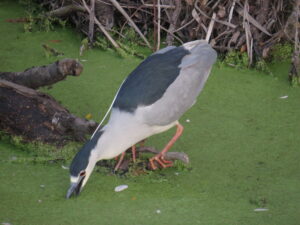
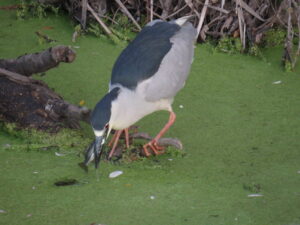

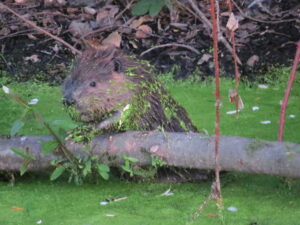
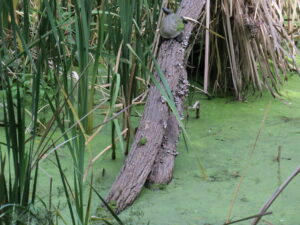
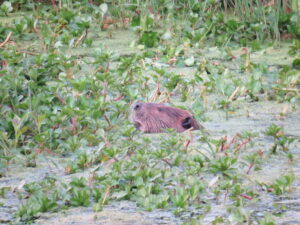
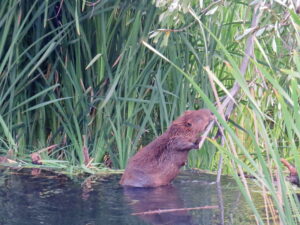
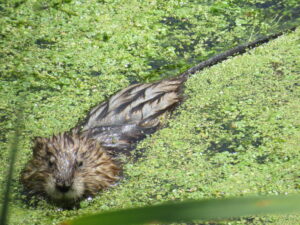
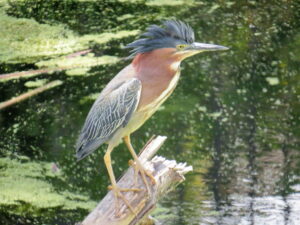
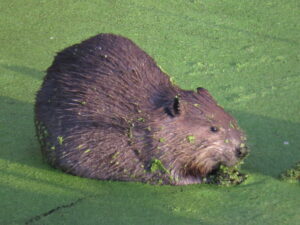
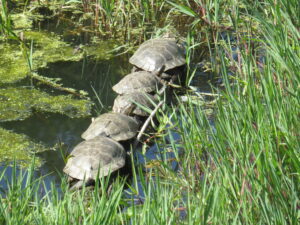
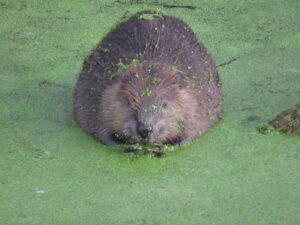
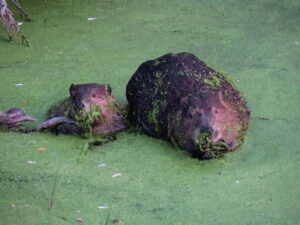

Beaver kits, Muskrats, Black Crowned Night Herons, River Otters, Green Herons, Western Pond Turtle, various fish, the list is constantly changing.




![]()
![]()




















 Beavers! They’re baaack! Beavers are amazing animals. Hear about their incredible physiology, Heidi Perryman and Mitch Avalon relate the story of the Martinez beavers, and what’s next for them in the Bay Area.
Beavers! They’re baaack! Beavers are amazing animals. Hear about their incredible physiology, Heidi Perryman and Mitch Avalon relate the story of the Martinez beavers, and what’s next for them in the Bay Area.
Marina Johnson, Detroit Free Press
Over the past decade, beaver populations have returned to southeast Michigan in places such as Belle Isle, Stony Island, the Conner Creek Power Plant and other places along the Detroit River.
Why did beaver populations decline?
When settlers moved into metro Detroit, beaver trapping for the fur trade was plentiful, eliminating much of the population. The existence of this species was almost wiped out due to 300 years of trapping and trading. Along with trapping, industrialization and habitat loss pushed beavers out of the area and they were last reported in 1877 as a result, said Great Lakes Now.
When did beavers return to the area?
Beavers were first reported back in the area in 2008, according to Friends of the Rouge. For the first time in over 100 years, beavers gnawed away at trees and built damns near Conners Creek Power Plant. Since then, beaver sightings in the Detroit and Rouge Rivers aren’t uncommon and continues to increase.
![]() But not necessarily welcome throughout.
But not necessarily welcome throughout.
Are beavers good for urbanized areas?
The DNR has beavers categorized as nuisance wildlife due to damage caused in urban and industrialized areas. They often gnaw on trees and their damns cause flooding and problems for homeowners. The DNR does offer trapping services and permits for those impacted in certain areas.
Cooley wrote the DNR is given a difficult hand because they want beavers around but not at the expense of someone’s property.
“Beaver in residential areas typically lead to problems, it’s their nature to back up and flood a waterway to create a pond,” he wrote. “Up North or out in the country, they can do that and it doesn’t impact anyone, most people would never even know it happened. However, down here in southeast Michigan if they back up a drain or a river, it is eventually going to flood someone’s yard and possibly impact their house.”
Read the whole article here. ![]()
Better acceptance in Cropton:
By Leigh Jones, The Northern Echo
The Cropton Forest beaver project, which saw two beavers released on enclosed land upstream of Sinnington in April 2019, has been credited with helping to reduce the flood risk for the village and for transforming the ecology of the area for the good.
The five year project, which is overseen by Forestry England, hopes to examine the impact of re-introducing beavers to the wild in England after they were hunted to extinction in the sixteenth century. It’s one of a number of pilots across the UK which have support from a number of organisations including the RSPB.
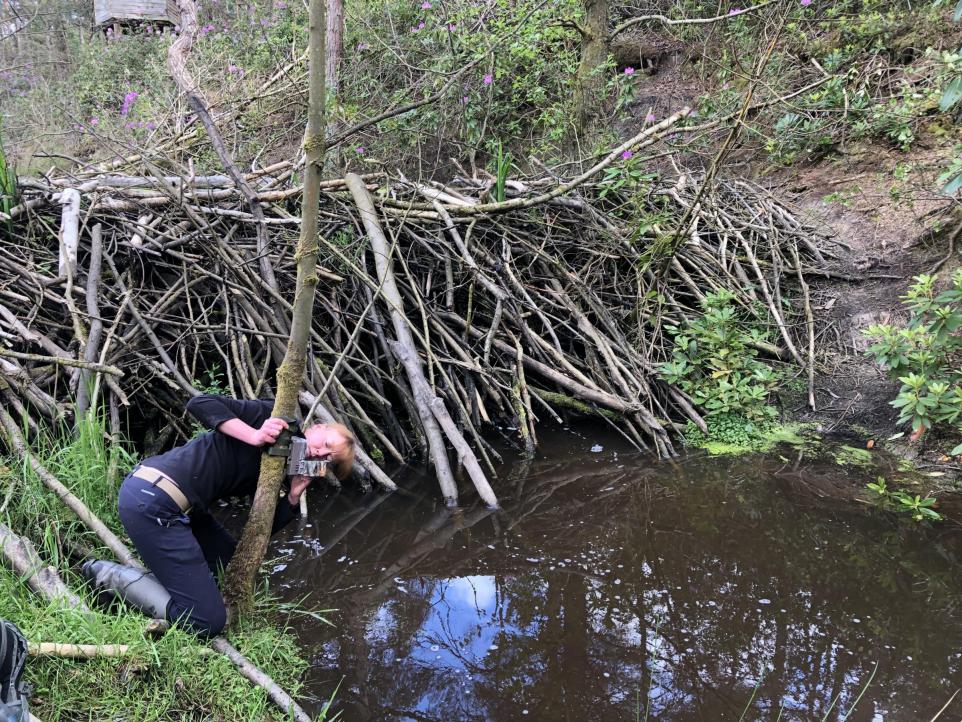
At the centre of the North Yorkshire beavers’ habitat is an enormous 70m long dam that the original beavers have built over the years alongside the kits that they’ve had since being re-introduced to the area four years ago.
Ecologist Cath Bashforth, who leads the project, said that the pilot has “far exceeded what we expected.
“We never expected such a dramatic impact in such a short space of time.”
In terms of the dramatic impact, the slowing of water flow through the site helps protect downstream areas from flooding, however the beavers’ presence has a knock on effect in many areas surrounding their habitat.
“At the start of the trial we had some fantastic volunteers who helped us take a baseline biodiversity survey to examine what impact the beavers would have,” says Cath.
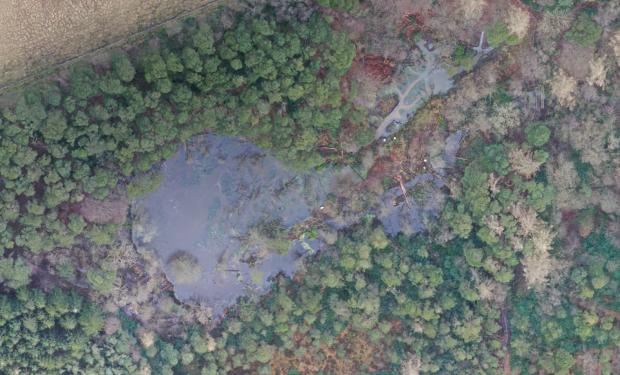
Having built their enormous dam along with five or six smaller ones Cath is optimistic that the beavers will be able to stay in North Yorkshire on conclusion of the pilot scheme.
As the project looks to reach its conclusion in a little over a year, the fate of the beavers presently on site remains undecided.
Read the whole article here. ![]()
And you might want to add this to your calendar:
Posted on The Ukiah Daily Journal
Peregrine Audubon Society Program will be hosting a zoom presentation on Tuesday, March 21 at 7 p.m. featuring The Beaver Believers hosted by Sarah Koenigsberg of the Beaver Coalition.
In this film, we follow our Beaver Believers out into some truly spectacular landscapes of the interior West, from the east slopes of the Cascade mountains in Washington to the Rockies in Colorado, from the parched red rock deserts of southern Utah to an urban park in central California.
We take you to places where beaver have already begun to transform damaged watersheds, and we learn of the many challenges that stand in the way of larger scale efforts to use beaver as a restoration tool, including trapping, which is tragically still legal in most states.
Perhaps most importantly, we meet incredible people who, undaunted by climate change, are working tirelessly to protect and restore beaver out on the landscape, who embody the spirit and joy that comes from “thinking like a beaver,” who show us that collaboration and watershed restoration truly are possible. All we have to do is let the beaver come home.
The coalition is dedicated to strategically advancing a paradigm shift in society’s relationship with beaver. Learn more at beavercoalition.org
Lastly, from Unofficial Networks:
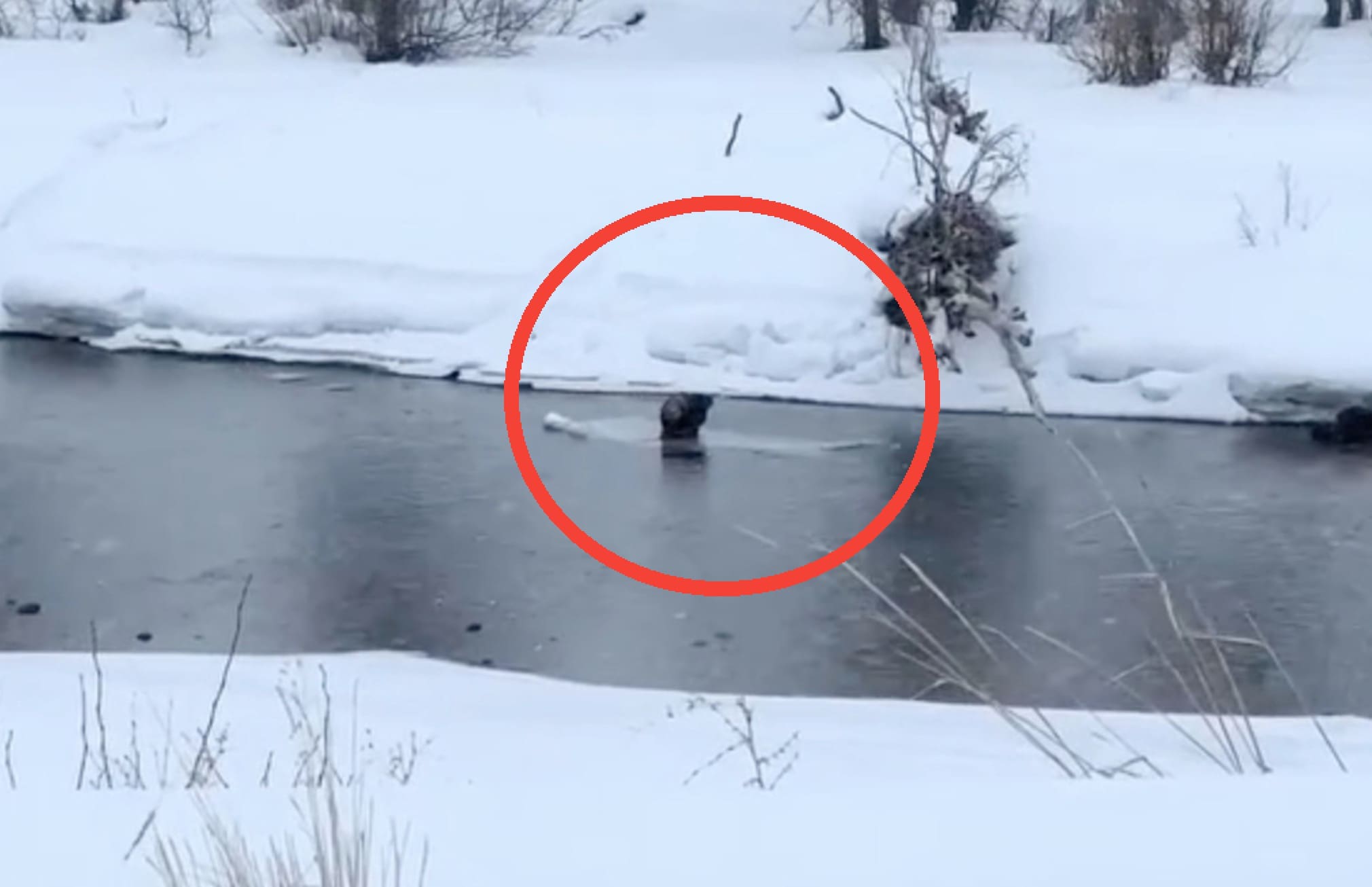
The cute video that the image above is taken from is by nature photographer Nick Sulzer.
by Tara Lohan
Researchers in Poland have found another reason to love beavers: They benefit wintering birds.
The rodents, once maligned as destructive pests, have been getting a lot of positive press lately. And for good reason. Beavers are ecosystem engineers. As they gather trees and dam waterways, they create wetlands, increase soil moisture, and allow more light to reach the ground. That drives the growth of herbaceous and shrubby vegetation, which benefits numerous animals.
Bats, who enjoy the buffet of insects found along beaver ponds, are among the beneficiaries. So too are butterflies who come for the diversity of flowering plants in the meadows beavers create.
Some previous research has found that this helping hand also extends to birds. For example, a 2008 study in the western United States showed that the vegetation that grows along beaver-influenced streams provided needed habitat for migratory songbirds, many of whom are in decline.
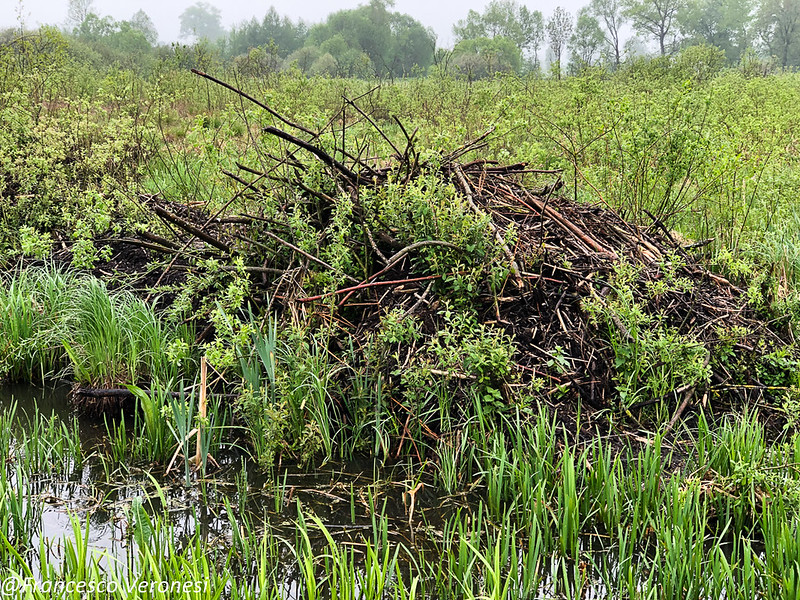
The new study published in the journal Forest Ecology and Management found further evidence by focusing on birds in winter. The researchers looked at assemblages of wintering birds on 65 beaver sites and 65 reference sites in a range of temperate forest habitat across Poland. Winter can be a challenging time for birds in that environment, as they need to reduce energy expenditures in the cold weather and find habitat that has high-quality food and roosting sites.
Wintering birds, it turns out, find those qualities near beaver habitat.
The researchers found a greater abundance of birds and more species richness near areas where beavers had modified waterways. Both were highest closest to the shores of beaver ponds.
“All beaver-induced modifications of the existing habitat may have influence on bird assemblage,” says Michal Ciach, a study co-author and a professor in the department of Forest Biodiversity at the University of Agriculture in Krakow, Poland. “But different bird species may rely on different habitat traits that emerge due to beaver activity. It’s like a supermarket.”
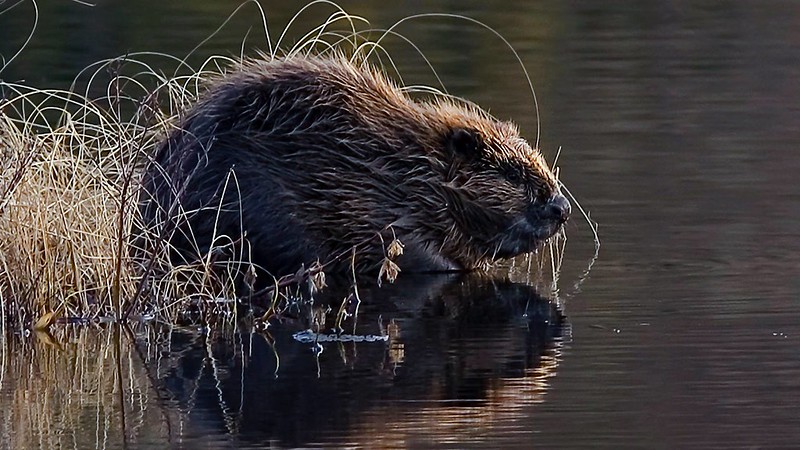
The growing research about beavers suggests a greater need to protect their habitat and understand their important role in the ecosystem.
“Beaver sites should be treated as small nature reserves,” says Ciach. “The beaver, like no other species, is our ally in stopping the decline of biodiversity.”
Read the whole article here. ![]()
A more practical and peaceful strategy emerging in the land know for beaver!/?
By Jack Farrell at the St. Albert Gazette
The City of St. Albert plans to add a couple of new tools to its water-management tool belt over the next few years to counteract problems caused by the local beaver population.
Melissa Logan, the city’s environmental coordinator, said staff will install pond levellers in high-priority spots throughout Carrot Creek and the Sturgeon River, starting this summer.
Unbeknownst to the estimated 16 individual beavers who call these rivers home, pond levellers allow water to flow through dams to prevent flooding, Logan said.
“The pond levellers you can put right in the middle of a dam and it will keep the water flowing through so that we don’t get flooding, but still allow the beaver to create some of the habitat that it needs,” she said.
“It’s just a method of coexisting with beavers on the landscape instead of getting rid of them entirely.”
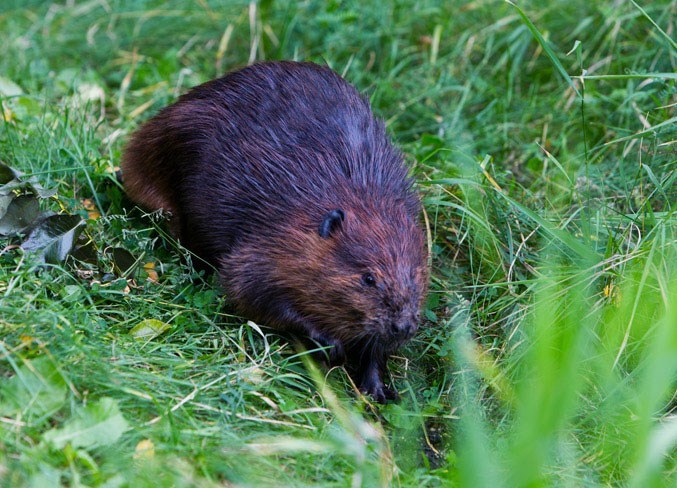
“Best-case scenario is that beavers are still able to be active on the landscape and do their natural water management,” Logan said of what she hopes the new tools will accomplish.
“Protection of our infrastructure in the long term is really what we’re looking for.”
Logan said staff will install the tools in high-priority areas this summer, and in lower priority areas over the next few years.
Major cost savings
Glynnis Hood, an environmental biology and ecology professor at the University of Alberta’s Augustana campus in Camrose and author of The Beaver Manifesto (2011), told The Gazette she has seen pond levellers save municipalities thousands of dollars.
“There’s cost savings, there’s ecological advantages, (and) there’s infrastructure advantages for reducing maintenance needs,” said Hood.
“For instance, in Cooking Lake-Blackfoot, we installed about 13 (pond levellers) and then we monitored them over seven years. The maintenance that was required … was maybe pull a few sticks out here and there and they worked really well,” she said.
“The cost savings was in the tens of thousands of dollars, and if we added on some other economic drivers … it could even be in the hundreds of thousands of dollars of cost savings just for those 13 sites that otherwise have been chronically flooded for over 10 years.”
Hood said pond levellers, culvert protectors, and other beaver-damage mitigation can improve how people in the community view their neighbourhood beavers.
Beavers as extreme-weather mitigators
As part of an ongoing five-year project, Hood and Dr. Cherie Westbrook from the University of Saskatchewan are studying how beavers and their dams might help mitigate extreme climate events, such as floods and droughts.
“Over 60 per cent of the beaver dams actually held even in the 2013 flood that devastated Calgary and downstream areas,” she said. “Many of the beaver dams were only partially breached or didn’t breach at all.”
“They actually played a role in holding back some of that floodwater or at least delayed or slowed its downstream flow.”
Hood said it’s too early to say definitively if beaver dams could be a significant tool during extreme-weather events in Alberta, but current data and modelling looks promising.
“In climate change, you’re going to get more extreme-weather events, like these big rainfall events, but you’re also going to get drought, and beavers (might) play a role in a natural and nature-based solution for some of these things.”
To learn more about beavers and, as Logan described, their unmatched water management engineering ability, Hood was recently featured in a TED-Talk YouTube video.
Read the whole article here. ![]()
Sadly, sometimes beaver fall victim to flooding as well:
KCBX | By Gabriela Fernandez, Benjamin Purper
The recent winter storms on the Central Coast didn’t just affect humans — they’ve also damaged the habitat of the local beaver population.
Audrey Taub is the Executive Director of the SLO Beaver Brigade, who describe themselves as “beaver advocates.” It’s a group of local biologists, science enthusiasts and community members who educate people about the rodents and the role they play in our ecosystem.
While talking and teaching about beavers is often a joyful experience, Taub said there has been some sad news recently about local beaver populations.
“The big rains pretty much washed everything out. This particular storm definitely displaced them,” Taub said.
“We found one dead juvenile. So they really can’t live on their own until they’re at least two. So these one-year-olds just didn’t have a chance.”

Taub said after the heavy rain, local beavers will have to rebuild their dams in places like streams and ponds. She said it’s not clear how long that will take, but she’s “excited for the whole community to watch the ponds develop,” Taub said.
Beavers play a major role in fighting climate change by building dams, which helps create and restore wetlands.
That’s important, because it’s estimated that globally, wetlands can store about 190 million cars’ worth of emissions every year.
Cooper Lienhart is the SLO Beaver Brigade’s Restorations Director.
“I used to think we would engineer our way out of the problem and make synthetic trees to suck CO2 back out of the atmosphere. But yeah, I learned that wetlands are [the] most efficient land ecosystem at absorbing and storing CO2,” Lienhart said.
Last week the SLO Beaver Brigade received the California Coastal Commission’s WHALE TAIL grant. Taub and Lienhart said the money will be used to offer educational tours, river cleanups, and translations for Spanish-speakers interested in learning about beavers.
More information on the emissions-fighting rodents is online at slobeaverbrigade.com.
Read the whole article here. ![]()
And there is more news from the SLO Beaver Brigade: The First Annual SLO County Beaver Festival!
Beaver Festival Info:
The SLO Beaver Brigade invites eager beavers of all ages to the First Annual SLO County Beaver Festival on Saturday April 1 in SLO Mission Plaza from 10 am to 3 pm. Kids are welcome and encouraged to come learn about beavers with us! The festival will be a celebration of our local beavers with live music, speakers, food and drink, educational displays, crafts and games, and local booths
Why do we celebrate beavers? Because we see them as climate change superheroes! Beavers build dams in our creeks and rivers, turning them into lush wetlands. This SLOWS the water down, allowing it to SPREAD out and SINK into our aquifers (slow it, spread it, sink it)! Not only does this help us in droughts, but their wetlands also create refuge from wildfires. Come join us on April 1st to learn about all this and more at our first ever SLO Beaver Festival.

![]()
And for the last bit of news, there is a very lively and informative interview with Ben Goldfarb by Taya Jae at The Pen and The Sword.
Over the years in Napa a following has developed that has been following the progression of wildlife that comes to call a Beaver Pond home
Juvenile Black Crowned Night Heron
Green Heron and endangered Western Pond Turtle